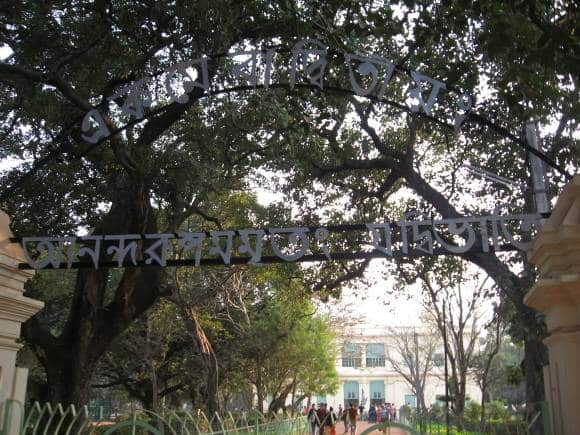



From the Khangchendzonga National Park with its unique geography of plains, valleys, lakes, glaciers and snowcapped mountains covered with ancient forests to the walled city of Jaipur built in 1727 by Sawai Jai Singh II according to a grid plan as interpreted by Vedic architecture, the diverseness of the Unesco World Heritage List is clearly evident even in the list of 40 Indian sites. A total of 1154 properties across the world is on the World Heritage List which is an array of cultural and natural wonders. This year, it will be celebrating its 50th anniversary on November 16th.
To be on the list, a site has to meet at least one of the 10 criteria listed on its website, including being a ‘masterpiece of human creative genius’, an ‘outstanding example of a type of building, architectural or technological ensemble or landscape which illustrates (a) significant change(s) in human history’. In India, the latest additions are Dholavira, Harappan City in the Rann of Kutch and Rudreswara Temple at Palampet, Warangal in Telangana (2020-21).
Nominations are made by State Parties, which are countries who have adhered to the World Heritage Convention. They have to give details of how a property is protected and provide a management plan for its upkeep and are expected to protect the World Heritage values of the properties if inscribed and encouraged to report periodically on their condition. In some cases, a nomination may not go forward, to give the country more time to work on its management plan for the site.
For 2022-23, the Hoysala temples of Belur, Halebid and Somanathpura are India’s nomination.
Considering that India is blessed with so many natural and cultural heritage sites, we took a look at five of them which should be on the list in the future.
Madhubani, BiharFor centuries, the women in and around the villages of Madhubani district in Bihar have decorated the inner and outer walls of their brick-walled houses with intricate and colourful paintings of Hindu gods and goddesses. The form of art, called Madhubani painting, has evolved over the years on different media, including paper and garments.
Some of the villages, like Saurath (Somnath Mahadev Temple), Kapileshwar Sthan (Shiva Temple), Rajnagar (Nagar Fort), Uchaitha (Uchaith Shaktipeeth or Pathshala of Kalidas), have a rich history, and their preservation could get a leg-up through the Unesco recognition.
Silk Route of IndiaThis had been nominated in 2010 by the Archeological Society of India which listed 12 locations on the route, including Ruins of Ancient Vaishali in Bihar, Ancient monastery and stupa together with adjacent land (Harwan) in Jammu and Kashmir, Excavated Remains of Kaveripattinam in Tamil Nadu, and Indraprastha in NCT Delhi. All the sites are well-preserved, giving hope for its inclusion.
Surrounded by the hills of the Eastern Ghats, Ahobilam has nine ancient Narasimha temples strewn around the Ahobilam village and in a steep gorge in the vicinity. The temples were built during the Vijayanagara Empire, destroyed by the Moghuls and later, restored. So, the architecture of the temples has an amalgamation of different periods and there are some beautiful natural rock formations including a gigantic monolith split vertically in the centre. Legend has it that Lord Narasimha appeared from there to devour King Hiranyakashipu. Pilgrims who trek through the Upper and Lower Ahobilam have to go through dense Nalamalla forests as they traverse to all the temples. The site is a prime example of how history and culture can keep a place alive.
 Santiniketan Griha. (Photo by Chandan Guha)Santiniketan, West Bengal
Santiniketan Griha. (Photo by Chandan Guha)Santiniketan, West BengalLocated about 160 kilometres north-west of Kolkata, Santiniketan is easily accessible by road and train. It is a renowned cultural pilgrimage where Nobel Laureate Rabindranath Tagore produced much of his poetry, literary classics and almost all of his paintings. The ‘Abode of Peace’ is home to Visva-Bharati, a famous experimental school founded by Tagore where fine arts (Kala Bhavan), dance, drama and music (Sangeet Bhavan) are taught along with other streams of education. Santiniketan’s attempt to be inscribed on the Unesco’s list failed in 2011 when its nomination was withdrawn.
Sanskrit VillagesWhile Sanskrit is acknowledged to be one of the finest languages dating back over 2,000 years, not many Sanskrit scholars can expect many career options on the merit of knowing the language. Many consider Sanskrit a dead language and that alone is reason enough for highlighting a handful of villages where Sanskrit is spoken by the inhabitants. Mattur and Hosahalli in Karnataka; Jhiri in Rajgarh, Madhya Pradesh; Sasana in Odisha; and Ganoda in Rajasthan are villages where people are fluent in Sanskrit. By bearing a unique or at least an exceptional testimony to a cultural tradition which has almost disappeared, they easily fulfil the third criteria on Unesco’s list.
Discover the latest Business News, Sensex, and Nifty updates. Obtain Personal Finance insights, tax queries, and expert opinions on Moneycontrol or download the Moneycontrol App to stay updated!
Find the best of Al News in one place, specially curated for you every weekend.
Stay on top of the latest tech trends and biggest startup news.